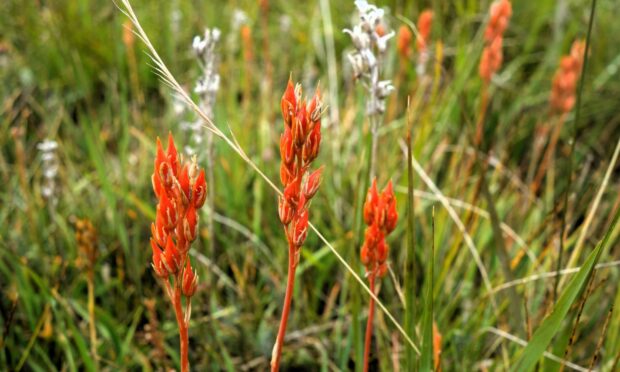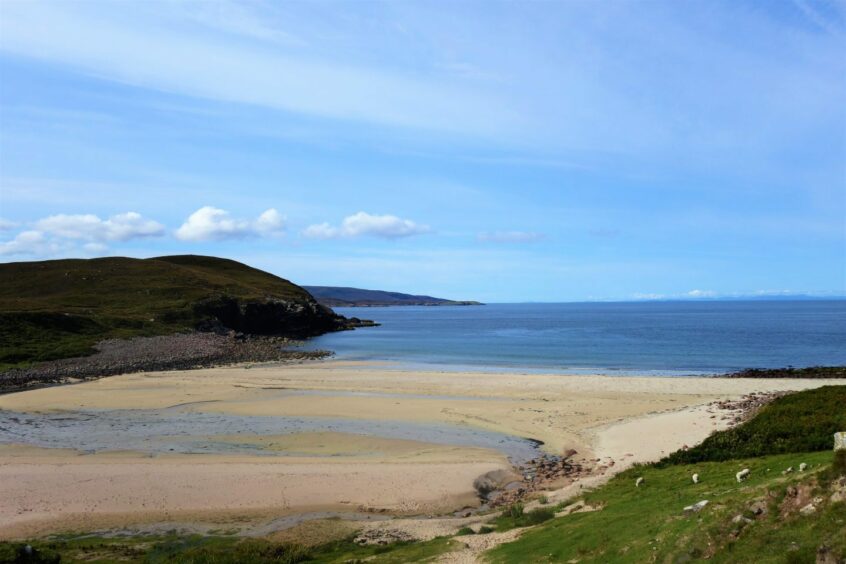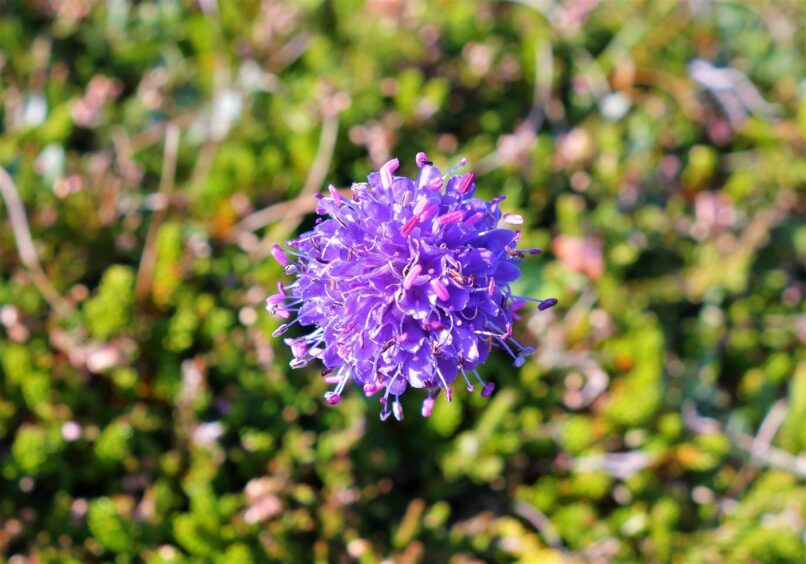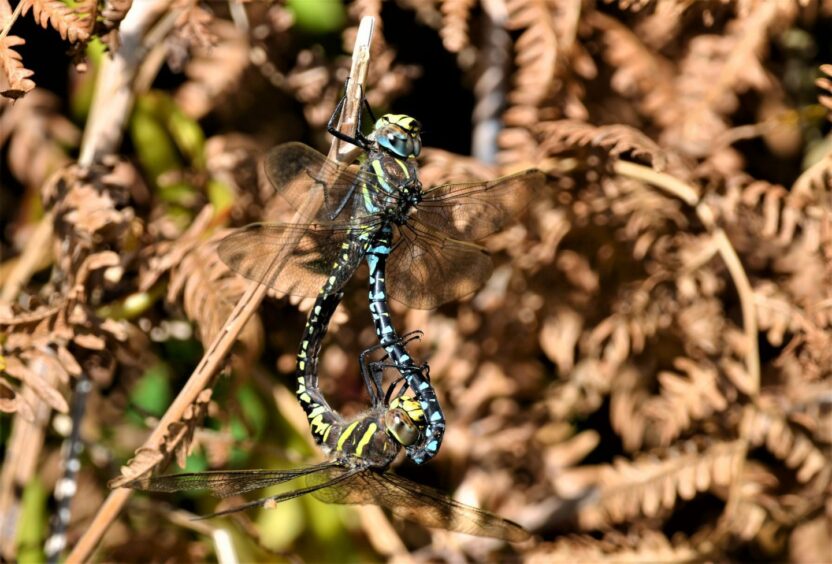Like flickering candles in the wind, the orange-flamed seed spikes of bog asphodel peppered the damp flushes of open moor by the head of Loch Ewe in Wester Ross, creating a dreamy sea of heavenly entrapment.
Bog asphodel is one of my favourite hill flowers – in July its striking golden-yellow flowers adorn boggy margins, and by early autumn this has transformed into an orange veneer that perfectly complements the lilac blooms of surrounding heather.
In the 16th century, women in Lancashire collected bog asphodel from moors to use as a yellow hair-dye, giving rise to the local name of the plant, maiden hair.
The scientific name – ossifragum – translate as ‘bone-breaker’ and stems from the belief bog asphodel made the bones of grazing sheep brittle – however, the real reason lay not in the plant, but rather on impoverished, calcium-poor ground where it grows.
It was a gloriously warm early September day on this mosaic environment of moor and lochans that lies between the delightfully named settlements of Mellon Udrigle and Mellon Charles.
To the north-east lay the mountains of Assynt including Suilven, Stac Pollaidh, Canisp and Quinag, while to the west, the far horizon was etched by the hills of Harris.
I followed the track towards Slaggan Bay, stopping every so often to admire the swansong flowering of heather and devil’s-bit scabious. The violet flowers of devil’s-bit scabious are intricate pincushions of beauty comprising exquisite convolutions and whorls.
The last part of plant’s name comes from its traditional use as a treatment for skin conditions such as scabies. The roots of devil’s-bit scabious are stubby, and according to folklore, this is because the Devil was so angry at the plant’s curative properties, he bit away part of the root.
A pair of hawker dragonflies fluttered past in an ungainly flight, coupled together in the embrace of mating, before alighting on a fern to fully consummate the act.
Once fertilised, the female will take to the air, and hover low over a ditch or hill pond, gently dipping the tip of the abdomen into the water to lay her precious bounty of eggs.
On the final approach to the sandy sweep of Slaggan Bay, a sea eagle soared in lazy spirals in the sky above.
From its lofty viewpoint in the high heavens, this eagle would be able to see a broad sweep of the north-west Highlands, stretching from Handa Island in the north to the hills of Trotternish on Skye and beyond in the other direction.
I felt a twinge of envy at this free spirit of the air, wondering in awe at the exhilaration that must course through every sinew of the body when soaring to such heights.
The eagle then closed its wings and swooped down over a nearby ridge and disappeared.
The beach proved the perfect lunch-stop and a reflective place to absorb its wonderfully wild atmosphere, including red-throated and black-throated divers bobbing out in the bay, and ringed plovers running on the wet sand on fast-pattering feet.





Conversation